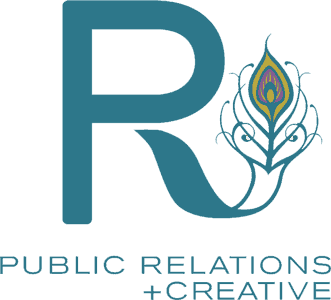R Public Relations Firm
5 Roles of a PR Firm that Will Improve Your Business Functions
You’ve probably heard of public relations (PR) firms, but what do PR pros actually spend their time doing? PR results can be challenging to quantify, but over time, comprehensive and strategic campaigns can improve many business functions and can even boost revenue. Read on to learn more about the five major roles of a PR firm and how each of these can improve business operations.
1. Develop and Implement Communications Campaigns
It’s a great idea to get an outside perspective on your business from time to time, and PR firms can do just that. As unbiased outsiders, PR firms can craft objective communications campaigns that truly highlight the business’s differentiators and key messages effectively.
Communications campaigns take a lot of work to plan, execute, and report on. Outsourcing this type of work ensures corners are not cut and ample time is spent on each task. PR firms can also decrease the overall workload that goes into campaigns because they can leverage tactics that worked in the past for other campaigns and their widespread connections with media personnel.
Finally, PR teams are equipped to monitor media coverage and opportunities around the clock. When your internal team is busy with other projects or traveling for work, your PR firm can keep campaigns moving without disturbing other workflows.
2. Monitor Media Coverage

The media cycle runs 24 hours a day, and it seems like a new media outlet is announced every week. It can be nearly impossible to keep up with all the chatter.
Media coverage is a significant task PR firms can take off your team’s list. Most PR firms are equipped with technology that can round up all media mentions of your business and other specific keywords. Ask your PR firm to provide an end-of-month report of your business’s media coverage, so you have a record to share with leadership and refer back to in the future.
You might also employ your PR firm to run competitor analyses using the same monitoring processes. Keep an eye on the types of coverage your main competitors are securing, and don’t be afraid to borrow good ideas. You might also use this research to inform the reporters and publications your business reaches out to in the future!
3. Manage Crisis Communications
Maintaining a favorable brand reputation is of the utmost importance, but proactive pitching techniques can fall by the wayside when your team has tons of other work. PR firms can keep up with your social listening.
When a crisis does arise, however, it will be all hands on deck. It’s smart to hire a PR firm with ample experience in crisis communications because, in the worst of times, things move fast. A slow response can often be interpreted by media members as a refusal to comment. Even if that’s not the case. In order to control the narrative of the crisis, you’ll need people in your corner who understand your business and can craft a thoughtful, empathetic statement in a matter of hours, not days.
Crisis communications also require a lot of time for coverage monitoring, responding to media requests, managing social media communities, and communicating with internal staff. If you don’t have an outside PR firm to help shoulder this burden, your internal team will likely have to table other work until the crisis is over. PR firms usually have multiple people on staff. They can shift assignments to deal with your crisis while your team continues pushing forward.
4. Develop Content and Key Messages

There are dozens of platforms to keep up with these days. Large companies will likely want to participate on all platforms to capture the widest audience possible.
PR firms are staffed with excellent writers and creative thinkers, which makes them well-suited for content creation. You can bounce ideas off your PR team or work with them to create and refine content buckets for any platform, from email marketing to your company blog to social media videos.
Staff members at PR firms also tend to be on top of content trends, whether it’s the latest TikTok audio or the current suggested length of LinkedIn posts.
5. Social Media Platform and Community Management

Speaking of social media, managing communities across so many platforms can be very time-consuming. PR firms can help your business ideate and draft content, schedule and publish content, respond to comments and DMs and comment on other brands’ posts. The best social media strategies include tactics for tackling all of these tasks and more—sometimes on a daily basis. This often is not realistic for internal team members. But PR firms have specialists on staff who can make quick, well-informed decisions on social media. So you don’t have to worry about getting accidentally canceled.
Social media community management, in particular, can be a time suck. Some brands select to respond to every comment and DM, while others respond to only a few. Either way, you’ll need to show your audience that you’re engaged and listening to them. Or you’ll lose followers and fewer people will see and interact with your posts. PR firms can dedicate a team member to manage your social media channels daily.
What is the best method to ensure I choose a PR firm that meshes well with my business and existing team?
First, vet your potential firm thoroughly. A great thing to do is to read case studies from past projects. You might also elect to meet your account manager to get a feel for their personality and communication preferences. At the end of the day, you’re looking for a team that fits seamlessly into your internal framework and makes your life easier, so you can continue regular daily business functions.
If you are currently looking for a full-service firm, contact us to schedule a call today!
Impacts of Intelligent Marketing and PR on Business
With a proper strategy in place, marketing and public relations (PR) can work together seamlessly to improve sales, public opinion, customer loyalty, and so much more! Marketing and PR are distinct practices—marketing focuses on the selling of products, while PR typically focuses on managing and maintaining a brand’s reputation. When applied intelligently, they complement and can strengthen one another.
Keep reading to learn about the varied impacts well-thought-out marketing and PR plans can have on businesses.
1. Increase Brand Awareness

Traditional marketing placements like out-of-home advertising, social media marketing, and in-person events can help sell products. But on a secondary level, they also work to boost brand recognition. PR teams can play off this by complementing marketing efforts with related pitches and other media opportunities. Together, these strategies can boost brand recognition across target demographics and markets.
Brand recognition is far more important for businesses than most realize—according to Liana Zavo, writing for Entrepreneur, “Without publicity and reputation, a business cannot grow in its respective industry.” Brand recognition is not only important for making sales. It also helps maintain and gain market share and subtly impacts public sentiment surrounding a brand.
2. Promote Brand Values
Trust is the most valuable thing a company can possess. With improved brand recognition comes increased awareness of brand values. As such, intelligent marketing and PR strategies can ensure the general public has a comprehensive understanding of a company’s giving initiatives, mission statement, and brand values. These key messages bolster customer loyalty, enhance word-of-mouth marketing, and help keep the top of the marketing funnel full of consumers.
Because social media marketing provides many opportunities for discourse with consumers, social platforms are a great place to share detailed information about company values. Thought leadership, well-placed op-eds, and executive interviews can all achieve similar effects; the strongest plan is to employ all of these strategies at once!
3. Strengthen Community Relations
Community relations fall into the scope of both marketing and PR. Generally speaking, marketing teams can foster relationships between businesses and their neighbors through in-person events and activations, staff volunteerism, and other foot-on-the-street initiatives. Public relations teams can help tell these stories through earned and paid media opportunities. People love to hear heartwarming stories, and these types of narratives also help to strengthen overall brand recognition and public sentiment, even though they don’t push any particular sales agenda!
Brands can also build their own communities by planning meet-ups, volunteer events, and other activations for their consumers and social media followers. PR and marketing teams can coordinate and publicize these events, which are great for demonstrating brand values in an authentic way and exemplifying that a business is interested in more than just selling its products!
4. Boost Staff Morale

Marketing and PR are not just for external campaigns! Especially when it comes to large corporations, marketing and PR strategies should be applied internally to boost staff morale and trust in executive leadership. Some examples of internal marketing and PR campaigns include the rollout of new mission statements and brand values, visual brand redesigns, and onboarding and corporate education.
Regular and effective internal communications impact the satisfaction of the workforce, which will directly affect customer service, word-of-mouth marketing, productivity, and recruitment as well as retention efforts. Internal communications can also be used to ensure employee voices are heard and taken into consideration through town hall meetings and anonymous suggestion boxes.
5. Improve the Profile of Executives
If marketing and PR strategies are executed well, the profile of top-level executives at the company will improve. This is typically achieved through securing speaking opportunities, thought leadership and op-ed placements, conference presentations, and participation on panels. Executives who appear trustworthy, educated, and connected to the company improve consumers’ confidence in the business as a whole.
Additionally, on-staff experts will receive more speaking, writing, and moderating opportunities. The PR team will have to rely less on outside placements. Everyone wins!
6. Keep Audiences Well-Informed

Not all audiences consume news and information from the same channels. Employing a robust marketing and PR strategy will ensure you’re reaching former and future customers wherever they already are instead of having to lure them to your preferred channels. Major business announcements, such as high-profile personnel changes, important product rollouts, and rebrands, should be pushed out across multiple marketing and PR channels to ensure the highest chance of informing all stakeholders. This can include but is not limited to email marketing, social media marketing, press releases, media advisories, interviews, and mailers. Marketing and PR teams must work closely to ensure the success of this type of campaign.
How important is it to hire both marketing and PR teams? Can I get away with just one?
Intelligent marketing and PR strategies will not only complement one another, but they will improve each other’s results. Often, marketing campaigns indirectly result in positive PR and vice versa. But choosing to employ one or the other will likely minimize results and weaken campaigns. Hiring both teams is not a requirement, but it is a smart business move.
Many firms offer both marketing and PR services in order to help businesses streamline their publicity needs. If you are on the hunt for a full-service firm, contact us to schedule a call today!










